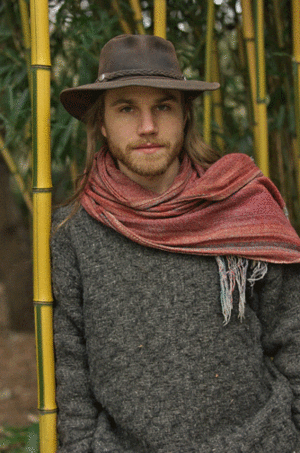Saturday, November 12, 2011
7:30 pm
Dobbs Ferry, NY
The Guy Mendilow Band’s Ladino Project: Songs of Imaginary Migrations
Common Ground Concerts at South Presbyterian Church
343 Broadway Dobbs Ferry, NY 10522 USA
phone: 914-693-1065
Price: $20.00
Purchase tickets online: Click here to purchase tickets
Website: commongroundfusw.com/2011/05/27/saturday-november-12-730-pm/

Led by Israeli performer Guy Mendilow, the quintet makes this ancient music relevant to today’s audiences by recasting it through the lens of modern migrations. Drawn from the places Mendilow and his musicians have called home, from Israel and Brazil to Japan and the United States, the resulting music is a blend of haunting Sephardi, driven with Brazilian street beats and tempered with blues. It is vibrant musical storytelling awash with warm vocal harmonies, intricate textures and spellbinding rhythms.
When the Sephardi Jews were expelled from Spain in 1492, they eventually settled in communities from Northern Africa and the Middle East to the Mediterranean and the Balkans. In each new home, their language, food, customs and songs soaked in local flavors of new cultures, and came to be known as Ladino culture.
The Guy Mendilow Band is continuing the vibrant Ladino tradition. Drawing on the dynamic world music expertise of each of its players, the Guy Mendilow Band’s Ladino Project explores imagined, cross-cultural journeys: as if Sephardi music continued traveling and landing in Appalachia, or the streets of Salvador in Northeastern Brazil. What will these songs sound like when they both preserve their essence but also become steeped in these new, imagined homes, as they have throughout their historical migrations? The band challenges concepts of borders in songs like “La Reina Xerifa Mora,” a dark legend shared between Jewish, Muslim, and Christian communities of Andalusia, that the band brings alive with regal Appalachian melodies and a touch of gritty blues. Or the playful, upbeat setting of “Mansevo Del Dor,” a tongue-in-cheek warning against social vanity, featuring Mendilow’s berimbau and overtone singing, as though the song has migrated wound up somewhere between Salvador and the Mongolian Steppe. Mendilow and his players are careful to respect and preserve the songs’ essential identities, even while working them through their modern, multicultural lens.
“There’s an even greater responsibility when you are working with music that is so old and rich,” says Mendilow. “You have to be careful to remain true to the tradition even as you innovate.”
This approach also influences the band’s non-Ladino tunes. Take “Sala’am,” an Israeli peace anthem, thatsubtly introduces Brazilian elements in its arrangement and whose warm harmonies nod to Crosby, Stills & Nash. In other songs, the group whimsically pushes ancient instruments in new directions, with an almost adamant refusal to take itself too seriously. For instance, in “Whistler’s Brother,” Mendilow’s award-winning overtone singing playfully duels with a bamboo flute. Or “Blues for Dino,” in which the band tips their collective hat to Brazilian berimbau hero Dino Nascimento through tongue-in-cheek slide berimbau (musical bow and arrow) blues.
Mendilow personally identifies with the musical re-imagining at the heart of Ladino music. Throughout his childhood, Mendilow’s family, and his musician-turned-professor father, played continental hop-scotch. From Israel to Johannesburg and the United States, community singing, often in their living room, was an important way of connecting with others and establishing home.
“Ladino music is fascinating to me because these communities in diaspora integratedelements of local culture into their own traditional music.” says Mendilow, “So the very same song might sound quite different in a community that settled in North Africa, or the Balkans. But this story is not unique. In fact, it’s almost universal. It’s the story of many types of music, from Jazz to the modern Malian rock of groups like Tinariwen. And it reflects each of our own stories, how we incorporate new elements into our lives through our own migrations.”
For Guy Mendilow, the music cannot be separated from the message. From his first touringexperience as a boy, swapping songs with Ladysmith Black Mambazo as a vocalist with the American Boychoir; to currently thrilling the audiences at venues such as the Chicago World Music Festival or New York’s Tribeca Performing Arts Center; to building cross-cultural understanding through facilitating musical workshops with government education ministers from Palestine, Israel, Jordan and Lebanon; Mendilow and the Guy Mendilow Band continue to journey beyond musical boundaries, blending antiquity and modernity, and bringing an ancient music to new audiences.
export this event to my calendar
